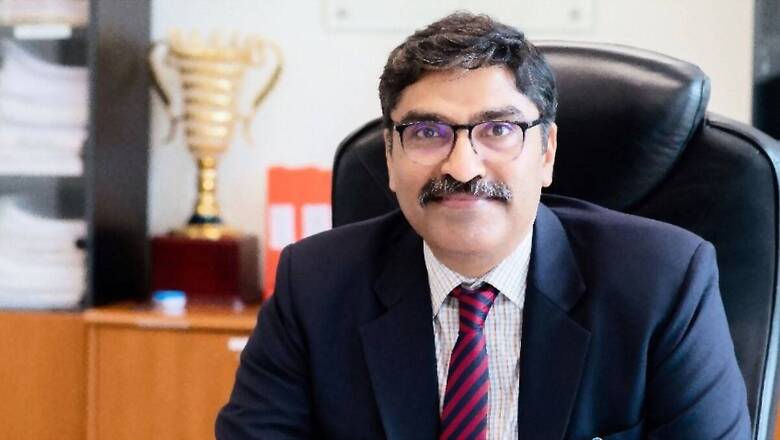
views
The Indian Institutes of Management (IIMs) are set to host the Indian Finance Conference, 2024, an annual event that sees faculty, research scholars and industry experts gather to showcase their best work. The event, moving away from the legacy of the older and top-rated IIMs, will be hosted by IIM-Raipur, a younger institute, for the first time from December 19-21.
Ram Kumar Kakani, the institute’s director, spoke to News18 on the challenges faced by the newer IIMs, why they have not been able to reach the top in the National Institutional Rankings Framework (NIRF) despite being tagged as premium business schools, why IITs have an advantage in the rankings, and how, despite all odds, the younger IIMs are making their mark.
Edited Excerpts:
What is the significance of the Indian Finance Conference, 2024, in particular when it’s being hosted by a younger IIM for the first time? What does it mean to a newer IIM like Raipur?
The conference started in 2008 and this is the 17th such event. It was started together by the three older IIMs — Ahmedabad, Bangalore and Calcutta. In the initial 10 years, the hosting would rotate among these three. It is only over the last two-three years that the older institutions started giving the other IIMs a chance to take the conference further. This is how IIM-Raipur got the opportunity.
The conference gives us a chance to showcase our research and attract international faculty and firms. One of the highest amounts of finance-related research happens in IIM-Raipur apart from IIM-A and IIM-B. It is a fantastic chance for us to showcase our scholars and faculty colleagues. Ahmedabad, Bangalore, Calcutta have had a certain head-start, with their legacy attracting different minds. This year, a few New York University-based professors and another from Singapore, I think, are coming down for the December conference.
IIM-Raipur is one of the younger IIMs and is located in Chhattisgarh, which is known for Naxal violence. What are the challenges that you face in terms of hiring of faculty and attracting international firms and collaborations with other institutions?
There are, of course, a few challenges. However, this is the only IIM that has an airport attached to it; just 16-17 minutes away. We must create a perception that this is a safe and secure place. The moment you say Chhattisgarh or Raipur, people only think of Naxalites. While there is no denying the fact that there is Naxal presence, we need to move beyond that. There is a challenge we face in attracting good corporates who can help with placements. This is why each conference gives us a chance to showcase our work and overcome such issues of perception.
Unlike the older IIMs, which have become self-sufficient, funding for the newer IIMs has been an issue for long. How has the institute been overcoming such challenges?
According to the government mandate, our performance metrics at the institute level include the amount of surplus we generate from the business window, which has nearly 20 per cent weightage. So, surplus generated is important. We don’t take up consultancy or sponsored research wherein the margins are less than, let’s say, 10 per cent. We are overcoming the challenge in two ways.
First, we pick up businesses and jobs wherein there is a certain amount of earning. For example, now we take up only a limited number of projects which may be 100 per cent socially impactful, but the monetary gain is near zero. Second, we are focusing on CSR funds and are hopeful that these will help us in enabling higher education with academic excellence. Besides this, we are aiming for grants, endowments, and other kinds of support. I would call the younger IIMs unicorns. Look at the number of MBA students we create and the amount of tax they are contributing to the government. Our contribution to the government, in that sense, is equally good.
Even though IIMs are premium business schools, many of the newer ones do not make it to the top NIRF rankings in the management category, which is often dominated by IITs. What do you have to say about this?
There are two to three aspects to it. First, IITs have the benefit of unlimited access to government funding, grants, endowments, and alumni networks. Second, if you observe, they push and showcase their non-management research as management research. What I am trying to say is that some of those metrics possibly will have to be revisited. Unlimited access to grants and funds results in the legacy institutes becoming bigger. For example, where do you think the largest law college is? It is not Jindal or HNLU or NLSIU, Bangalore. In future, you will see IIT Kharagpur School of Law becoming the biggest because it has maximum funds. So, what I am trying to say is that one needs to understand that the IITs have those kinds of massive advantages.
Of late, placements at the younger IIMs have seen a dip, with even summer internships getting difficult. Is it the global economic scenario or has there also been a shift in the kind of profiles that recruiters are now looking for?
Yes, placement scenario has not been great, whether it is IIM or any other institution. The impact has definitely been more on smaller and unknown institutes compared to legacy institutes.
For IIM Ahmedabad, with an alumni network of 40,000, it is easy to push, pull and place their students whereas for a younger IIM, with just about 3,000-4,000 alumni, there would be some challenges in placing graduates. Despite that, we have been able to get an offer for each of our students last year.
Second, our average or median salaries have been around 20 Lakh Per Annum (LPA). I think there has been a reduction of about 5-7 per cent in the 2023-24 session from the past. What was around 21 LPA has come down to 20 lakhs. It is all linked to the global economic scenario and, with the advent of Artificial Intelligence (AI), it led to some roles like data analyst being reduced. Also, this year was the year of elections, which led to a lot of scepticism and caution. Summer internships were a problem but it is not right to say that students did not get anything. Maybe, they didn’t get what they possibly expected at the time of joining because of the economic downturn. The hiring among giants like Meta too has not been very high.
Despite that, on the bright side, this scenario led us to a lot of mid-size organisations that offered jobs to our students. It also helped us meet corporates, understand the needs of mid- and new-age firms and ensure that our admission process and teaching meet those requirements.



















Comments
0 comment